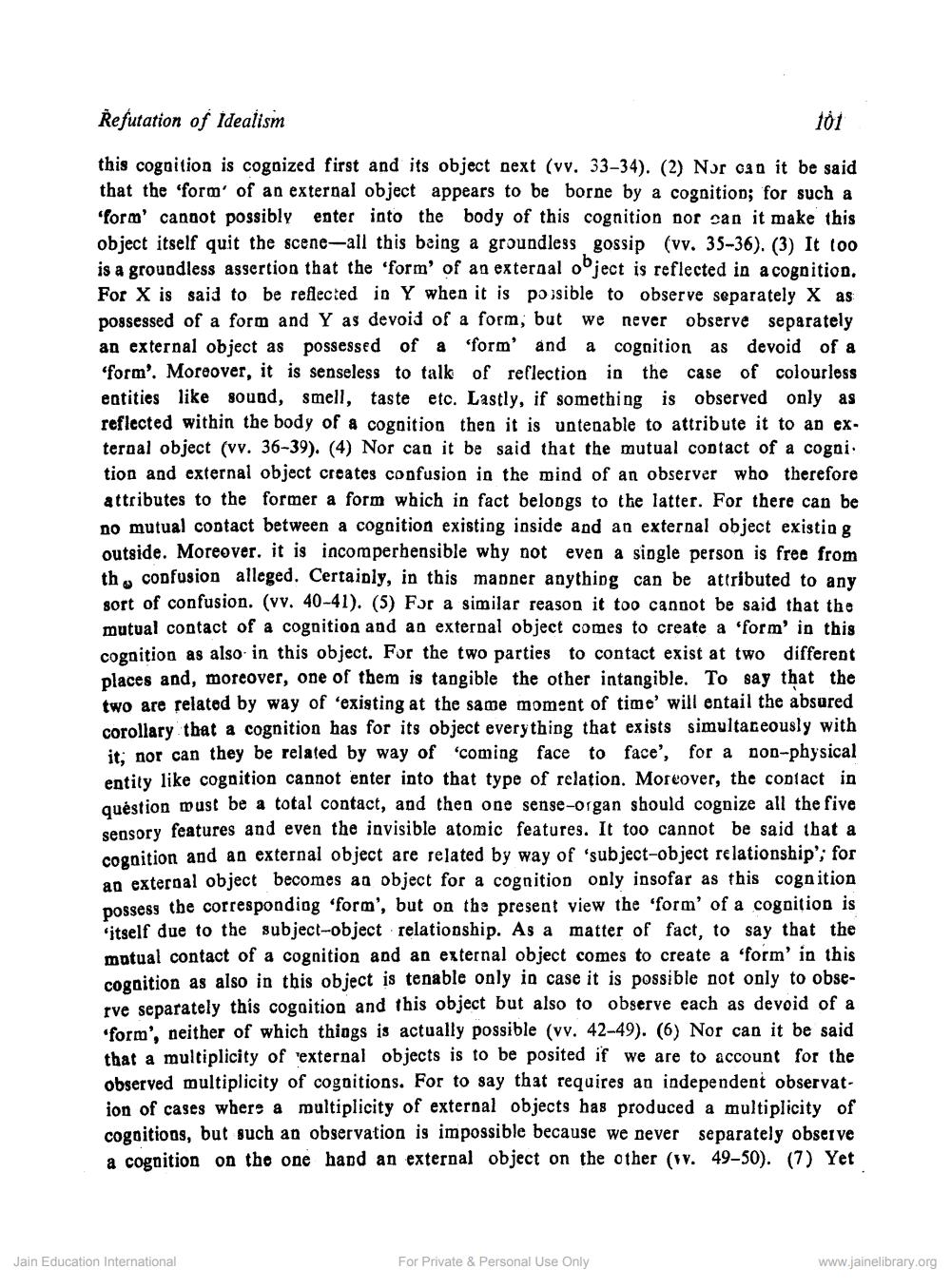________________
Refutation of Idealism
101
this cognition is cognized first and its object next (vv. 33–34). (2) Nür can it be said that the 'form' of an external object appears to be borne by a cognition; for such a 'form' cannot possibly enter into the body of this cognition nor oan it make this object itself quit the scene-all this being a groundless gossip (vv. 35-36). (3) It too is a groundless assertion that the form of an external ooject is reflected in a cognition. For X is said to be reflected in Y when it is possible to observe separately X as possessed of a form and Y as devoid of a form, but we never observe separately an external object as possessed of a 'form' and a cognition as devoid of a 'form'. Moreover, it is senseless to talk of reflection in the case of colourless entities like sound, smell, taste etc. Lastly, if something is observed only as reflected within the body of a cognition then it is untenable to attribute it to an exteroal object (vv. 36-39). (4) Nor can it be said that the mutual contact of a cogai: tion and external object creates confusion in the mind of an observer who therefore attributes to the former a form which in fact belongs to the latter. For there can be no mutual contact between a cognition existing inside and an external object existia g outside. Moreover, it is incomperbensible why not even a single person is free from th, confusion alleged. Certainly, in this manner anything can be attributed to any sort of confusion. (vv. 40-41). (5) För a similar reason it too cannot be said that the mutual contact of a cognition and an external object comes to create a 'form' in this cognition as also in this object. For the two parties to contact exist at two different places and, moreover, one of them is tangible the other intangible. To say that the two are related by way of existing at the same moment of time' will entail the absured corollary that a cognition has for its object everything that exists simultaneously with it; nor can they be related by way of 'coming face to face', for a non-physical entity like cognition cannot enter into that type of relation. Moreover, the contact in question must be a total contact, and then one sense-organ should cognize all the five sensory features and even the invisible atomic features. It too cannot be said that a cognition and an external object are related by way of 'subject-object relationship'; for an external object becomes an object for a cognition only insofar as this cognition possess the corresponding 'form', but on the present view the 'form' of a cognition is
itself due to the subject-object relationship. As a matter of fact, to say that the matual contact of a cognition and an external object comes to create a 'form' in this cognition as also in this object is tenable only in case it is possible not only to observe separately this cogaition and this object but also to observe each as devoid of a 'form', neither of which things is actually possible (vv. 42-49). (6) Nor can it be said that a multiplicity of external objects is to be posited if we are to account for the observed multiplicity of cognitions. For to say that requires an independent observation of cases where a multiplicity of external objects has produced a multiplicity of cogoitions, but such an observation is impossible because we never separately observe a cognition on the one hand an external object on the other (w. 49-50). (7) Yet
Jain Education International
For Private & Personal Use Only
www.jainelibrary.org




